In this review our “new guy” Matty takes a close look at the Pro iDSD DAC from iFi Audio! Let’s check out this swiss army knife of a DAC.
Disclaimer: iFi have lent me the Pro iDSD for the purposes of the review. All thoughts and experiences with the product are naturally my own. Headfonia and iFi are not related in any way but iFi is a site advertiser.
Note: This is Matty’s very first review for Headfonia. Let’s give him a warm welcome!
First-up – a big “hello” from me, as I’m publishing my first review since joining the Headfonia team. It’s awesome to have the opportunity to share my thoughts, insights and experience with a range of upcoming personal audio gear that I hope you’ll find useful. To kick things off, I’ll be reviewing the Pro iDSD from Southport UK manufacturer iFi Audio. I’ve spent some time living with it as my primary digital source + desktop headphone amplifier.
iFi Audio produce a (somewhat confusingly-named) prolific range of audiophile products and accessories, including headphone amplifiers, cables/connectivity peripherals, and power and digital-related accessories. But they are perhaps best known for their series of DACs – ranging from the $199 USD nano iOne; to the highly-regarded $599 USD micro iDSD BL portable DAC + headphone amplifier; right up to their flagship Pro iDSD – which we’ll be covering today – weighing-in at a not-inconsiderable $2,499 USD.
So what exactly is it?
According to the manufacturer, the iFi Audio Pro iDSD is “a standalone unit, a streamer and a DAC/amp”. In fact, it has a pretty boggling set of features and applications that might seem daunting for the average audio punter, and perhaps even for the seasoned digital audio veteran. First and foremost, it’s bread and butter proposition or raison d’être is to perform as a high-end digital-to-analogue converter.
The Pro iDSD is designed to live at the heart of an audio chain and handle any kind of file-type thrown at it, be it MP3, FLAC, DSD, and even MQA. It’s also a pre-amp – able to act as the “brain” in a two-channel digital audio system, managing and switching sources, as well as changing volume upstream of other products such as a power amplifier. The Pro iDSD can also function as a playback device or ’source’. It’s able to play digital audio files either on-board via a Micro-SD card (and controlled remotely via a mobile app), streaming via wifi/DLNA, or as a Roon endpoint.
It features an all class-A solid-state amplification-stage, but the Pro iDSD also packs a NOS General Electric 5670 tube. This allows you to add the option of tube harmonics (as well as a nice ‘glow’) to your listening experience in ‘tube’ or ‘tube+’ mode. Lastly (but not least), it also boasts a capable on-board headphone amplifier, rated at 4000mW at 16 ohms (balanced).
So, a bit to chew-off for a first review, right? Well, having such an impressive list of capabilities, I’ll be looking at the Pro iDSD through the lens of how it performs as an all-in-one unit for headphone listening.
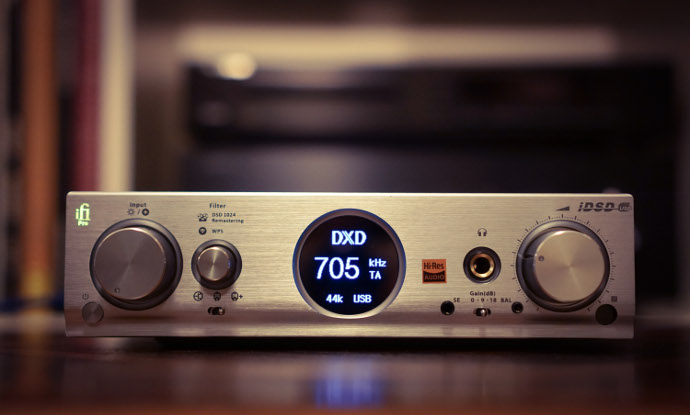
iFi Audio Pro iDSD
I’ll be also asking a few hard question of it:
Can this be the the only DAC/amp you’ll ever need?
Will it “future-proof” all your amplification and digital-to-analogue decoding needs?
Does it offer “end-game” performance to match its price-tag?
And does it offer a great user-experience and ‘liveability-factor’ to match its impressive spec-sheet?
Let’s dive-in and take a look.
Build and form-factor
The Pro iDSD is a pretty sleek-looking and altogether well-built, all-metal affair that certainly oozes “high-end”. It’s futuristic look with a hint of design flair gives an indication of the talents that live inside, as well as the craft that’s gone into it. The Pro iDSD ships inside fittingly-premium but not ostentatious packaging, along with a simple up/down volume remote (critical for pre-amp duties); a set of RCA cables; a simple plastic tool for changing the rear switch settings; a USB cable; an optical to 3.5mm TOSLINK adapter; and a comprehensive user manual.
At a whisker under 2kg, and measuring 21cm x 22cm x 6.3cm, it’s a strictly desktop or hifi-rack affair (unless you’re dedicated enough to lump it around in a Pelican-case!). Outwardly, it presents the user with a bewildering array of knobs, switches, and outputs. The focal-point of the front of the unit is a circular LED window that displays digital input selection, digital sampling-rate, as well as filter and upsampling information. It looks pretty cool, and does its job of telling you what’s going-on inside. On top it gives the Pro iDSD a ‘face’.
The nicest aesthetic-touch is the ‘porthole’ that displays the NOS GE 5670 tube. It’s surrounded by a swirl of vent-holes that reveal an impressive glow when the tube input is engaged. Flip-around to the back, and you’re presented with perhaps the largest series of inputs, outputs, and switches ever packed-into a compact desktop device.
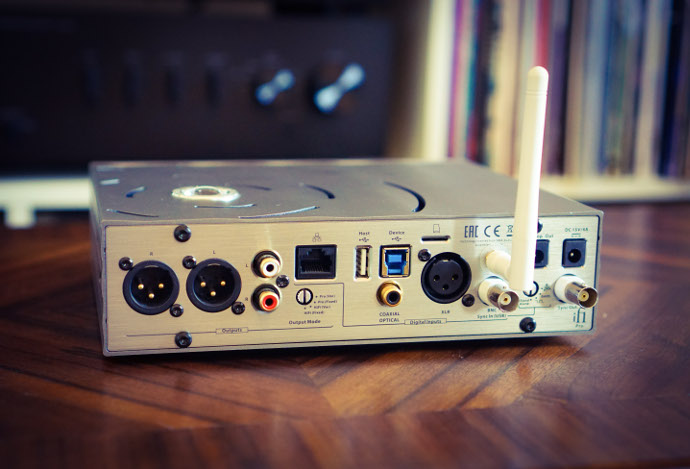
iFi Audio Pro iDSD
Left-to-right, we have (deep breath…):
Analogue outputs: XLR Balanced + RCA single-ended outputs; plus a switch for toggling-between fixed (line-out), variable (pre-out) output, as well as the option for “Hi-fi” setting (4.6V fixed, balanced-out), or “Pro” (11.2V fixed, balanced).
Digital inputs / connectivity: Host/device USB; Coaxial/Optical; Micro SDHC slot; XLR Digital; BNC; and WIFI antenna.
And to round things-out, there’s a toggle switch for various clock sync modes; a clock sync output; DC loop-out supply; and DC power supply connection. Power is supplied via a 15V / 4A power-brick.
(You’ll notice a trend when it comes to describing the Pro iDSD: it gets exhausting to list its features!)
Let’s spin it back-around to the front to go-over the controls and user-interface. I want to cover perhaps my only gripe with the physical-build of the Pro iDSD. Rather than having rubberised ‘feet’ like most desktop hifi gear, instead it has a single foam ‘pad’ that covers the entire bottom-side of the unit. Given you’ll likely have several cables and headphones plugged into the Pro iDSD at any point, this presents a problem. It likes to spin-around on its axis with a light “tug” on anything that’s joined to it, or when brushed or bumped. It’s not a huge quibble, but for a $2,499 unit, I’d want to make sure it stays firmly-put.
More about the Pro iDSD on page two!







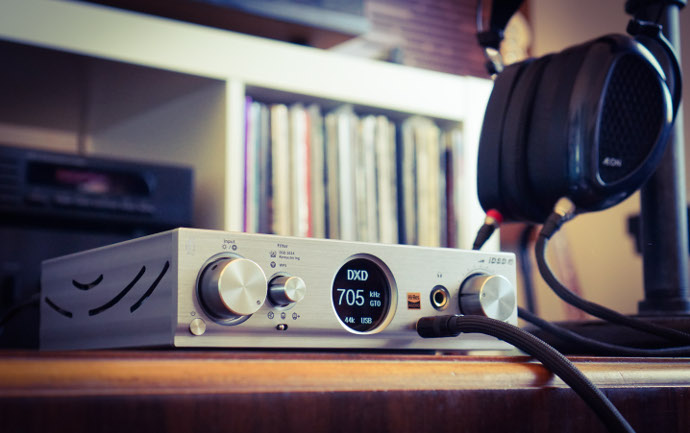
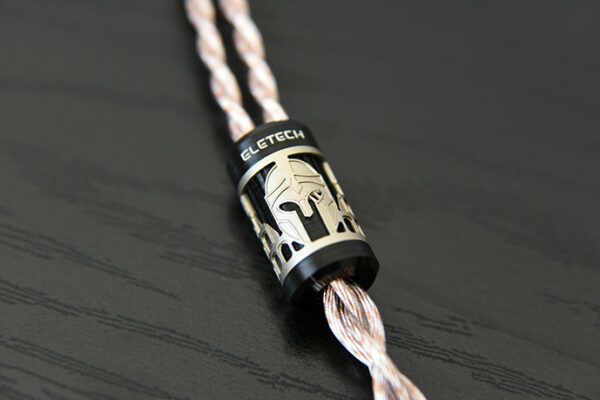
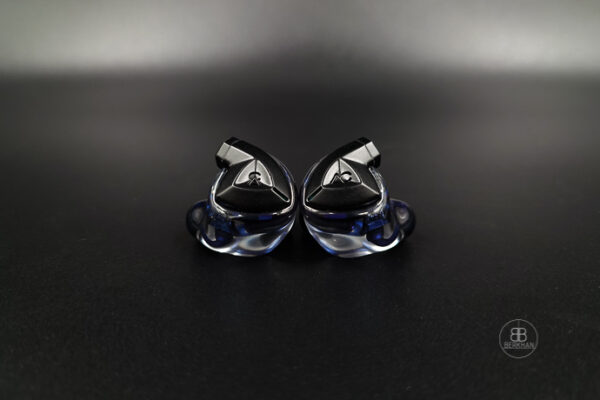
Berkhan
Great pics!
Matty
You’ve set a high benchmark mate…
Golea Andrei Cosmin
Hi Matty,
Are you also going to review the IFI AUDIO PRO ICAN amplifier? Since you liked their Pro iDSD solution, I am really interested in knowing what is your opinion on the iCAN Pro.
I have been using their amplifier for at least 6 months and I am loving it.
Regards,
Andrei.
Matty Graham
Hi Golea, I haven’t planned to as yet but it’d be terrific to try it out “stacked” with its digital counterpart! Watch this space.
Golea Andrei Cosmin
Initially I went to our local retailer just to test out some setups. I already had an ifi audio micro iDSD Black Label which I was using as DAC/AMP with my HD800S.
When I got there, I tested the following setups:
1. Chord Hugo2 as DAC/AMP
2. micro iDSD Black Label as DAC + iCAN Pro as AMP
3. iDSD Pro stacked with iCAN Pro using balanced connection.
Out of these 3 setups, I went with the iCAN Pro amplifier to use together with the Black Label until I will have the money to also buy the iDSD Pro and replace the Black Label completely.
I can’t say I didn’t like the Hugo2, but man…..when I enabled Tube mode and boosted the Bass just to the first level…the iCAN Pro felt like a step above. And this while trying it with the Black Label.
After this acquisition, I also bought some after market XLR balanced cables for the HD800S to use it on the iCAN Pro and again, another step above the 6.3mm cable.
I have a few friends which are talking all day long about their Topping DACs and AMPs but I don’t think they can match the level of design and implementation of devices from companies like Ifi Audio or Chord Electronics.
But it would be interesting also like if you could test out some devices from Topping. I don’t believe I saw any reviews about them on this site.
vonBaron
@Golea Andrei Cosmin
I have Pro IDSD and Pro ICan, the IDSD i great DAC and good DAC/AMP.
But when u add ICan they SQ is two level higher, very clean, transparent, fast, just WOW!
It’s my end-game units.
Golea Andrei Cosmin
Yeah. As I said, this will also be my TOTL setup.
Unfortunately I have other stuff/gadgets on the shopping list so for the moment I am sticking with my Black Label as DAC and it’s enough.
But when I finish with my other upgrades, the Pro iDSD will become a priority.
vonBaron
Little Update!
I just get 2.5mm BAL adapter and now Pro IDSD sounds way better than with 6.3mm or 3.5mm output.
Golea Andrei Cosmin
Why would you use the Pro iDSD to amplify your headphones when you just stated in one of your replies above that you also have the Pro iCAN?
In order to have the best sound quality you link the iDSD to the iCAN through balanced cables and also use the balanced XLR output from iCAN for your headphones?
vonBaron
Yes i have Pro ICAN but now i don’t have time to use it propelly.
It takes time to warm it up to sound best (20-30min), heat what he generates is very big, so ergonomics is poor.
Yes i have XLR IC and for most time i use XLR headphone cables for best sound.